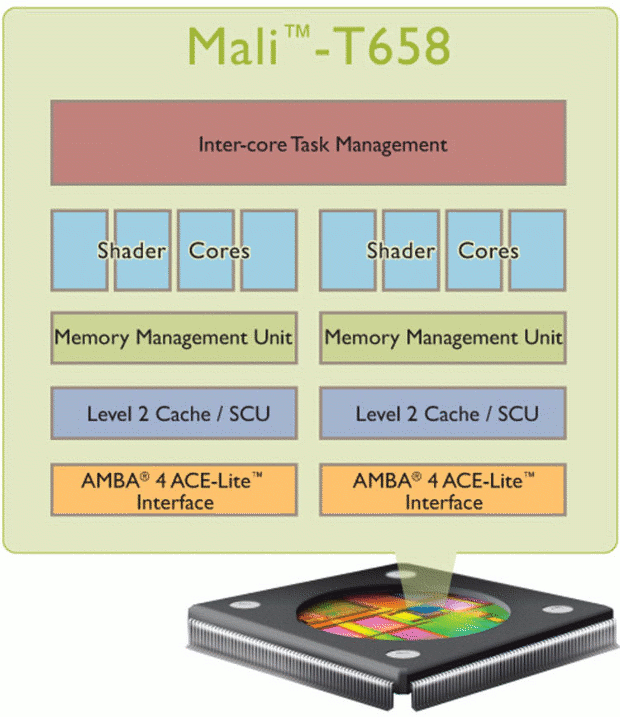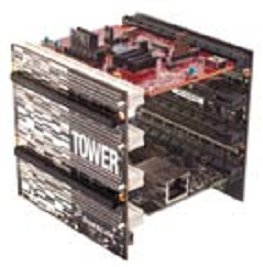About one year ago, ARM announced the Mali-T604 GPU which has yet to be used in current products. Yet today, ARM announced an even more powerful GPU called Mali-T658 in Tokyo at Japan ARM Technical Symposium. Mali T658 is based on Midgard GPU architecture (as is Mali T604) which allows great GPGPU capabilities thanks to three types of pipeline (‘tri-pipe’) optimized repetitively for arithmetic, load/store and texturing. The GPU will also support standard graphics APIs such as Khronos OpenGL ES, OpenVG andMicrosoft DirectX® 11) as well as Compute APIs such as Khronos OpenCL (Full Profile), Google RenderScript compute and Microsoft DirectCompute. Performance-wise, Mali-T658 has twice as many shader cores and double the arithmetic pipelines per core which means the GPU can offer up to 10 times the performance of the Mali-400 MP GPU. On the compute side, Mali-T658 provides 4 times the processing power of Mali-T604. Mali-T658 will work with […]
Brew Your Own Beer with Freescale Kinetis Cortex M4 MCU
This brewing system is part of top three designs for Freescale Make It Challenge: Kinetis MCUs. The two other designs are an Automobile Collision Detector and a “Swiss Army Knife” for the Blind . This design utilizes Freescale’s Kinetis K60 Tower System with MK64M512 Cortex M4 MCU and FreeRTOS operating system. This could become a beer brewing appliance with the target market being home brewers and small brewpubs and restaurants. Matthew Pratt (the one who design this system) says current hone brewing systems sell for about 10,000 USD. The sweet wort production process can be labor-intensive, requiring precise control of temperatures and transition times (It takes 4 to 5 hours for 5 gallons of beer). The Kinetis Beer Brewing System automates the process from the initial filling of water to the beer being ready to be cooled and yeast added. The user only needs to add the ingredients, malt and […]
Linaro’s Android Platform – ELCE 2011
Zach Pfeffer, Linaro Android Platform team leader, describes Linaro’s work on the Android platform and future plans at Embedded Linux Conference Europe 2011. Abstract: Linaro uses components from the Android Open Source Project, member companies, community supported efforts and Linaro engineering teams to build integrated, easy-to-use and well tested Android platforms for upstream work, product baselines and hobby projects. The team currently has platforms for TIs PandaBoard, BeagleBoard and Beagle xM, ST Ericsson’s Snowball, Samsung’s Origen and Freescale’s iMX53. They recently released platforms with Android 2.3.4 built against GCC 4.6 and running the 3.0 Linux kernel. In this session Zach reviews what’s been done, the Linaro Android concept, how Linaro brings Android together and what their plans are.
Archos 80/101 G9 Firmware Version 3.2.69 Released
Archos has just released a new firmware for Archos 80 G9 / 101 G9. Here’s the changelog: Firmware changes Version 3.2.69 – November 9th, 2011 Web browser: faster web page rendering Media center: built in online subtitle download support after a long press on a video file under video browser Media scraper: faster information retrieval process External storage: add ability to mount disks without partition Android version: switch to Honeycomb 3.2.1 Battery: low charge notification Multimedia: support for split AC3, MPEG2 plugins The firmware can be downloaded at http://update.archos.com/9/gen9/gen9_3.2.69/firmware_archos_it4.aos
Using Buildroot For a Real Project – ELCE 2011
Thomas Petazzoni, embedded Linux engineer and trainer at Free Electrons, shows how they used buildroot for a specific project at Embedded Linux Conference Europe 2011. Abstract: Buildroot is a nice, simple and efficient tool to build small to medium sized embedded Linux systems, such as the ones found in many industrial systems or highly dedicated systems. Buildroot allows to automate the process of building a cross-compiling toolchain, building the root filesystem with all userspace components, building a Linux kernel image and a bootloader image. Based on experiences of a specific customer project, Thomas details how Buildroot can be configured and used to quickly produce nice, fast and efficient embedded Linux systems, but also how the target application development and debugging can be done based on Buildroot. You can also download the presentation slides.
Device Tree Status Report – ELCE 2011
Grant Likely, owner at Secret Lab Technology, describe the current status of device tree (used to resolve ARM “hodgepodge” issue) and provides an example at Embedded Linux Conference Europe 2011. Abstract: In recent years, Linux has enjoyed immense success in the embedded market, and we’ve seen an explosion in the number of devices supported by the mainline Linux kernel. Traditionally, however, adding support for another embedded machine typically involved adding yet another board.c file to the kernel which more often than not was simply cut and paste from a similar board. As a result, board support code contains a huge amount of duplication and has become so huge that it is becoming unmaintainable. To move away from individual board files, several architectures have adopted the Device Tree method of encoding the hardware details into a data structure which can be parsed by generic initialization code and device drivers. This session […]
National Geographic Augmented Reality Application
Impressive Augmented Reality Live Broadcast: Shoppers walk by a large screen in a mall where they can see themselves with wild animals, dinosaurs and walk with astronauts. This Augmented Reality system has been designed by AppShaker, a “digital creative agency devoted to building the finest online experiences for brands across the world”. You can also go to their website to watch their other projects. I suspect the augmented reality system above is based on a PC system.
Build Community Android Distribution and Ensure the Quality – ELCE 2011
Jim Huang, developer and co-founder of 0xlab, explains how they built an Android distribution with Linaro at Embedded Linux Conference Europe 2011. Abstract: While developing Android distributions, 0xdroid and LEB (Linaro Evaluation Build), we learn much about the development approach to non-traditional open source software model such as Android Open Source Project. This session shares the experience how 0xlab established the community, contributes to upstream (in unusual way), and leveraged the strong efforts from Linaro. Also, 0xlab develops a serial of open source projects to ensure overall performance and quality for better user experience.








